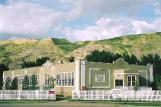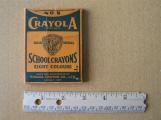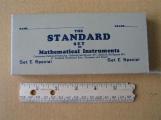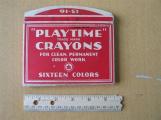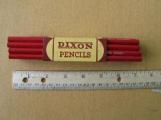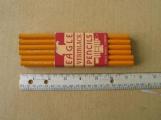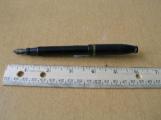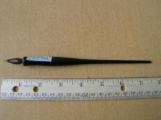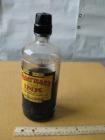1
The East Coulee SchoolThe population growth in the town was so rapid that after only one year it was decided to build a 'modern' school in East Coulee. Prior to that there were small buildings or even just a room in boarding house that served as the school. The school was to be a standalone structure with 4 classrooms and a proper staff room to accommodate the 6 teachers and principle that would be working there. All grades from 1 to 12 would be taught and a caretaker would ensure the building was looked after rather than having the teachers do this work as was common in those days. The people of the town and surrounding area were very happy to see the school open in 1930.
However, the population was growing very quickly and the folklore from the time indicates that it became obvious there would be need for more classrooms right away and planning for an addition were started. Most accounts give 1936 as the date the the new 8 room addition opened. Upstairs there were four classrooms, a principal's office and another set of bathrooms. There were four more classrooms downstairs which included a library anbd science lab. The custom at the time of having a separate for boys and girls was maintained and the new boys entrance was at the far end of the school. The halls rang out with laughter and talking as the children went about the business of learning ABCs and the three R's.
The school was closed in 1970 and abandoned for more than 13 years. Then in 1983 some people in East Coulee decided this building must be saved and the school and classrooms restored. They worked tirelessly to raise awareness in the town itself and with other groups and agencies that could help support the project. Eventually the school reopened in 1985 and has been operating in a variety of contexts since that time. Presently, the museum houses the local post office, a tea room, a gift shop, a library, museum displays and of course. a fuly restored classroom from the 1930s. This room is used to hold a school program where students of today can come and experience what it might have been like to attend school in that era. The strict but fair "Miss Morrison" always gets the attention of the students leaving them with a memory that will live on. Many of the students that attened on eof her classes have remarked that being taught by her, even for just one class, left a lasting impression.
4
School Supplies have changed...The supplies that students used in the 1930s were very differrent from those used by the students of today. While today the students reach for a calculator or a gel pen to write with or perhaps even just type directly into their laptop, the students in the early days of East Coulee used fountain pens and palin paper. If their parents had a little extra money they could buy a scribbler with lined paper and a real cover. The following images show some of the artifacts that have been saved at the East Coulee School Museum from days long gone by.
6
Mathmatical tools ? Do you mean a calculator ?The tools used in class did not include any electronic devices like calculators. It was necessary to learn the times tables by heart and to know how to do long division. And there was a set of tools that included a protractor, a triangle, a ruler and a compass. These were used to create neat drawings for mathmatical problem and in science as well. The students did not have the advantage of automatic drawing tools that make perfect circles or square.
8
Simple tools for DrawingFor drawing and coloring the students used pencils and crayons which were the only options at the time. Contrast this with the plethora of choices facing one when looking to purchase a pen in the stationary department. There are dozens and dozens of types and styles to choose from each with a variety of colors. The simplicity of the early days left the student to concentrate on the task at hand rather than which one of the many writing instruments they should use. The crayons were hard to get and cost extra. Using these was a special treat and the students always looked forward to a chance to do some coloring. A simple but effective way the teachers helped build a Good Life in the Badlands.
11
Fountain Pens and Ink WellsThe students had to use fountain pens and had inkwells in their desks. Each desk had a hole to hold the inkwell which was sometimes used by mischievous boys to dunk the pony tail or braids of the girl sitting in front of them. This could be messy as was using the fountain pen itself to write. The students had to wait for the ink to dry or else it would smudge. The teachers were very strict about this and would not tolerate messy work. This was extremely difficult for left-handed people for if they used thier left hand and held the pen in the normal way, they could not avoid smearing the ink. To alleviate this problem almost all teachers forced the "south paws" to use thier right hand to write. To ensure the children adhered to the command, the teacher would sometimes tie the left hand behind thier back or hit the left hand with a ruler so hnard that it was not possible for the student to write at all.
There was always a good supply of large bottles of ink to fill the inkwells. New fountain pen nibs were also available when the tip on the pen wore out. The invention of the ballpoint pen was a very welcome event not only by the little gilrs with long hair in braids but even more so by the left-handed students.
